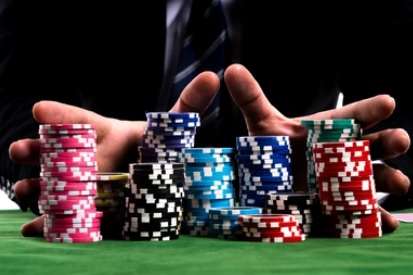In my last post, I talked about why bluffing is such an integral part of poker. In this post I want to focus on what conditions we need to make a bluff successful. Anyone who has played poker for a decent amount of time has had a bluff blow up in their face. However, almost every time I play, I also see someone make a bluff that is just so bad that it deserved to blow up in their face. So what’s the difference between a good bluff and a bad bluff? The following criteria should help us figure that out.
1) Less Players = Higher Likelihood of Successful Bluff
This first criteria is pretty self-explanatory – the more players there are in a hand, the less likely it is that your bluff will work. The reason for this should be pretty obvious as well. Once you get multiple players seeing a flop, the more likely it is that one of them has hit the flop in a pretty decent way. So if you are in a full-ring game where the majority of players are limping a high percentage of the time; where raises are being called by multiple players; where 3-bets are basically non-existent preflop; and where most hands are seeing a flop with multiple players, then you are not in a game where you should be attempting to bluff very often. Ideally, when we are making a bluff we want our hand to be versus just one opponent. So save your bluffs for opportunities where you can get your hand heads-up. On the flip side, if you are a player that craves action and loves to bluff, then you should probably look to play in shorthanded games or even better, to play heads-up.
2) No Limit > Pot Limit > Limit
This next criteria is simply stating that the more pressure you can put on your opponent, the more likely your bluff will work. Because I can bet any amount of my chipstack in No Limit, I can also use my entire chipstack as pressure. The more pressure I put on my opponent, the harder it is for him or her to call me (unless they have the nuts). In limit games the most pressure I can put on my opponent is in an increment of one bet. If I get my opponent heads-up in a limit game, my opponent knows they can see a showdown by calling just one more bet on the turn and river. Whereas in a NoLimit game, my opponent knows they might have to call off their whole stack if they want to see a showdown. This means that it is much harder to bluff in a limit game than it is in a No Limit game. When we take our first two criteria together it is clear that the best game to bluff in would be a heads-up No-Limit match; and the worst game would be a full-ring, Limit game.
3) Don’t Bluff Calling Stations
This next criteria deals with having a read on your opponent. It is really hard to bluff an opponent who rarely, if ever, folds. So when we do bluff we want to make sure our opponent is capable of folding. I think the biggest mistake I see made in terms of bluffing is bluffing the wrong opponent. I will often see a good player bluff a calling station and then exclaim in disgust as the pot is going towards the station, “How can you call with that garbage?” So the next time some drunk guy comes to your table and is raising every hand, and calling all-ins preflop with QTo, it is probably not a good idea to “show him who’s boss” by bluffing him – instead you should wait for a hand that beats his and value bet him to death.
4) Your Image Matters
Just as you should not be bluffing a player who will never fold, you also should be aware of your own image. If you have shown down bluffs; if you are a very active player who is in a lot of pots; or if you are known as a bluffer you are going to have a much harder time bluffing than if you are tight player who isn’t involved in a ton of pots and has only shown down really good hands.
5) Make Sure Your Bluff Tells a Reasonable Story
Lastly, and this matters even more when you are up against a good player, you need to make sure that your bluff makes sense. For example, if you are a player who always 3-bets pre with QQ-AA, you can’t suddenly make your hand look like you have QQ-AA postflop when you just called preflop. If you are a player who would bet a hand like AsKs on a 3s7sQd flop, then it doesn’t make a lot of sense for you to check that flop and then bet or raise when a 3rd spade comes on the turn. In other words, when you are making a bluff, make sure that the way you are playing the hand makes sense in terms of how you would play your good showdown value hands as well.
So next time you are in a situation where you want to bluff, stop for a minute and think about the above criteria and then decide whether this is actually a good time to make a successful bluff, or whether you are doomed from the start.
Submit your review | |









